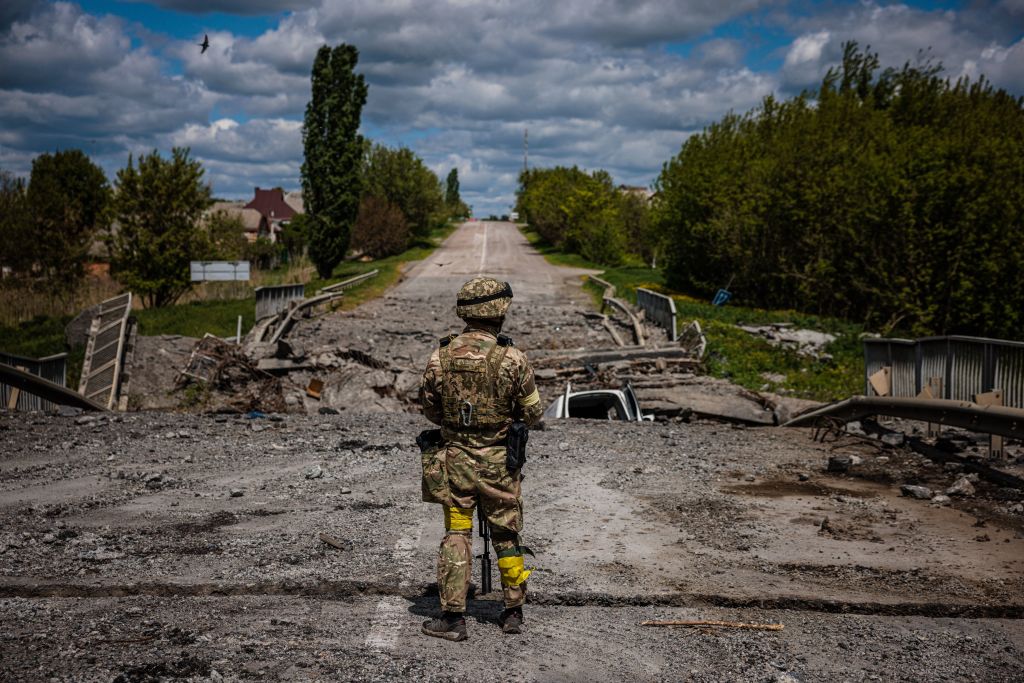
In the year since Russia launched its full-scale invasion of Ukraine, the war has evolved in ways few predicted. The conventional wisdom was that Russian forces would quickly overwhelm the overmatched Ukrainians and take possession of much more of the country than they gained in 2014. Others went further, predicting that Russia would topple the government in Kyiv and replace it with a puppet regime that would ratify Russian control and no longer embody a Western-looking alternative to the bleakness that has become Vladimir Putin’s Russia.
Given such dire forecasts, many in the West and in Ukraine would have readily accepted a version of what exists today, namely, a sovereign Ukraine exercising authority over some 80% of its territory. That this is the reality is a tribute to the effectiveness of Ukraine’s military, the collective courage of the Ukrainian people and their leaders, and the steadfastness of US and European support in the form of arms, money, training, intelligence and the acceptance of millions of refugees. It is also a stunning indictment of Russia’s military.
Putin is faced with difficult choices as he contemplates a war of choice that hasn’t gone as planned. His decision to invade wasn’t irrational, given his assumptions that Ukraine would be no match for his military, that Europe (especially Germany) was too dependent on Russian gas to stand up to him, and that the United States, in the wake of the events of 6 January and the withdrawal from Afghanistan, was too divided and inward-looking to aid Ukraine’s defence. But, because all these assumptions proved wrong, Putin’s calculation that the benefits of invading would dwarf the costs became a formula for disaster.
Putin now finds himself playing for time. Unable to defeat Ukraine’s military, he is attacking economic and civilian targets, hoping to break the will of Ukrainians. He may also believe that, despite what Western leaders say, it’s only a matter of time before European governments, along with the US, rethink the costs of supporting Ukraine.
So, what does this augur for the future? Wars end one of two ways: when one side defeats the other and is able to impose its peace terms, or when the two sides conclude that compromise is preferable to continuing a war neither is strong enough to win.
Neither of these conditions applies to this war as of now. To be sure, it’s far from clear that Ukraine can eject Russia from its territory, even if Western governments shed their inhibitions and supply Ukraine with more advanced arms. Russian forces are dug in and will be difficult to dislodge. And there’s the possibility, or even likelihood, that China will provide copious economic and military assistance to Russia rather than see its strategic partner defeated by a US-led coalition.
Russian forces, for their part, are simply too poorly trained and led to defeat Ukraine on the battlefield. Aerial attacks on civilian areas, however brutal and costly, are no substitute for battlefield success, and so far have merely stiffened the resolve of the Ukrainian people.
And yet the outlook for compromise is bleak. Putin appears determined to stay the course lest perceived defeat in Ukraine spur efforts by domestic rivals to remove him from power. Sanctions have had only a limited effect, as India, China and others continue to purchase Russian energy. And Putin controls the political narrative at home, persuading many that Russia is a victim, forced by the US and NATO into a fight for survival against the West as a whole.
Ukraine, too, is disinclined to compromise. Nearly all Ukrainians are calling for the complete liberation of their country’s territory. The reason is straightforward: the war has changed minds. Ukraine’s military prowess, and the manifest shortcomings of the Russian military, have nurtured more than a little strategic optimism about what the future might hold.
Moreover, the war has hardened hearts. Russian atrocities, including bombing apartment buildings and executing civilians, has led to calls for reparations and war-crimes tribunals. Some would add to that list the removal of Putin and his inner circle from power, an outcome seen by many as essential if Ukraine is ever to have confidence in any peace settlement.
In short, the conditions are far from ripe for diplomacy. One day that will change, but it appears to be far off. The good news (if there is any) is that the war may well become less intense as both sides face the difficulty of sustaining the magnitude of losses they have suffered over the past year. They simply lack the personnel, equipment and economic resources to do so.
It also seems unlikely that Russia will opt to escalate. Attacking NATO makes no sense when it’s patently clear that Russia can’t even defeat Ukraine. Nuclear weapons seem to have little or no military value, and both China and India have made clear their opposition to their use. More important, Russia’s use of nuclear weapons of any type would almost certainly bring US and NATO troops directly into the war.
The bad news, though, is that the war will not end anytime soon. The map of Ukraine a year from now will most likely resemble nothing so much as the map as it appears today. The year ahead promises to be dismal, not decisive—more reminiscent of World War I than of World War II.
It all adds up to a significant and sobering anniversary. A war that few expected to last so long could well spur another round of commemoration and analysis a year from now.

